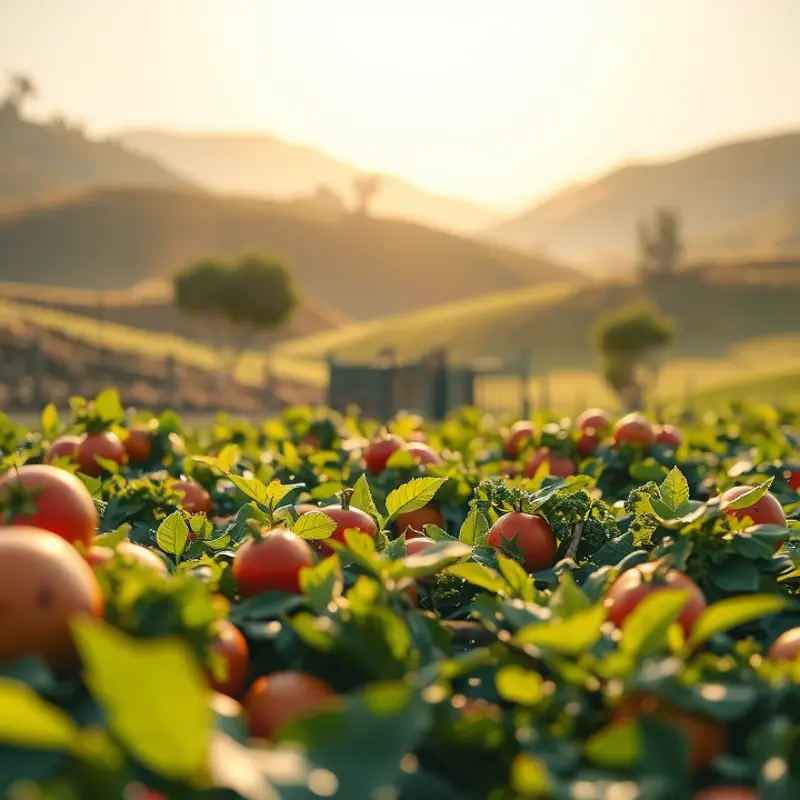Cooking starts with the right preparation, and slicing vegetables evenly is one of the simplest yet most effective skills you can master. It ensures that your veggies cook uniformly, enhancing their flavor and texture. From the basic lozenge to intricate julienne cuts, this guide equips you with practical tips for achieving consistent sizes every time you step into the kitchen—no matter your current skill level. Let’s explore how to slice your vegetables like a pro!
Essential Knife Skills for Even Slicing

Achieving uniform vegetable slices begins with understanding the right types of knives and learning proper grips. With a focus on precision and safety, mastering these skills transforms meal preparation.
Start by selecting the right knife for the task. While a chef’s knife is versatile and great for most vegetables, a paring knife may be preferable for smaller produce like bell peppers. An essential factor for even cuts is your knife’s sharpness. Regular honing and sharpening ensure your knife slides easily through vegetables, reducing the risk of slipping.
When it comes to gripping the knife, the pinch grip is fundamental. Position your thumb and forefinger on either side of the blade’s base, while the remaining fingers wrap around the handle. This grip provides greater control over the knife’s motion and minimizes hand strain.
Now, consider your stance and the positioning of the vegetable for optimal slicing. Stand with feet shoulder-width apart for stability and bend your knees slightly. Ensure that the cutting board is secure and at a comfortable height. Unstable boards can cause injuries or uneven slices.
For slicing zucchini, utilize the rocking motion. Position the zucchini parallel to the board’s edge. Cut off both ends to stabilize it. Move the knife blade from point to heel in a smooth action, keeping the tip in contact with the board.
Carrots, being round, pose a greater challenge. Slice a small portion off one side to create a flat surface, preventing rolling. Use the claw grip to hold the carrot in place, tucking fingers under and using knuckles to guide the knife.
Bell peppers present an opportunity to practice technique. Cut off the top and bottom, creating a cylinder. Slice down the side to open the pepper and remove the seeds. Lay it flat and slice into even strips, utilizing a consistent rocking motion.
Maintaining your knives isn’t just about effective cuts; it also prevents unnecessary waste from squashed or uneven slices. Consider exploring low waste cooking techniques for more ideas on efficient meal prep and storage.
Master these foundational knife skills to enhance your cooking experience. By ensuring even vegetable cuts, you invite consistent cooking and present dishes with aesthetic appeal. Plus, the satisfaction of using properly prepped ingredients enhances the entire culinary process.
Techniques for Perfectly Even Cuts

Mastering the art of even vegetable cuts is essential for both aesthetic and practical reasons in cooking. Properly cut vegetables ensure uniform cooking and enhance the presentation of any dish. Let’s explore some essential techniques to achieve perfectly even slices, batons, and dice.
Positioning for Success
A fundamental aspect of slicing is securely positioning your vegetable. Begin by creating a stable base. For elongated vegetables like carrots or cucumbers, trim a small portion along one side to create a flat surface. This prevents rolling and provides stability when slicing.
When cutting round vegetables such as onions or potatoes, slice them in half first. Place the flat side down on the cutting board. This technique not only adds stability but also makes it easier to achieve uniform cuts.
Visualizing and Measuring Evenness
To ensure even cuts, it helps to visualize the size and shape you aim to achieve. For slices, decide on the thickness before you start. Align your knife and focus on maintaining the same width throughout each cut.
For batons, consider the length and thickness required. A common standard is a length of about 2–3 inches and a width of 1/4 inch. Keep these measurements in mind as you cut to maintain consistency.
Dice is a bit more challenging but can be achieved with practice. Start by slicing the vegetable into even strips, then cut those strips into uniform cubes. Consistent practice will refine your ability to gauge evenness by eye. If you seek further guidance on refining your culinary skills, consider exploring minimal prep dinner ideas which might help you practice these techniques efficiently.
Practical Slicing Methods
The claw grip is essential for both safety and precision. Curl the fingers of your non-dominant hand like a claw, using the knuckles to guide the blade. This grip helps keep your fingertips safe while ensuring the blade moves in a straight line.
For slicing, hold the knife firmly with your dominant hand. Use smooth, even strokes, allowing the weight of the knife to do most of the work. Avoid applying excessive pressure that can result in jagged edges.
When cutting batons or dice, work methodically. First, slice the vegetable into manageable pieces. Stack the slices and cut them into even batons before proceeding to dice if necessary.
Exercise to Improve Speed and Precision
To enhance your slicing skills, try a simple exercise. Choose a vegetable like a carrot or cucumber. Practice slicing it into even discs, timing yourself to increase speed while maintaining precision. Gradually move on to more complex cuts, such as batons and dice.
Repeating this exercise regularly will build muscle memory, enhancing both speed and accuracy. By dedicating time to practice, you’ll notice a significant improvement in your kitchen efficiency and the quality of your dishes.
With these techniques and exercises, you’ll be well on your way to achieving perfectly even cuts, adding both aesthetics and functionality to your culinary creations.
Final words
Mastering the skill of cutting vegetables evenly can significantly change your cooking experience. Not only does it improve the aesthetics of your dishes, but it also ensures that all of the ingredients cook at the same rate, resulting in better flavor and texture. With consistent practice, you’ll notice that your confidence in the kitchen grows along with your culinary skills. Remember, patience is key, and soon enough, you’ll be impressing family and friends with perfectly cooked veggies that taste as delightful as they look.







